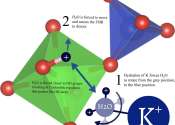Scientists discover first-ever mineral-based treatment for widespread disease using the structure of crystals
In a groundbreaking discovery, scientists at the Natural History Museum of Los Angeles County and pharmaceutical firm AstraZeneca have published the first-ever mineral-based treatment for a widespread disease.
Mar 27, 2024
0
126









